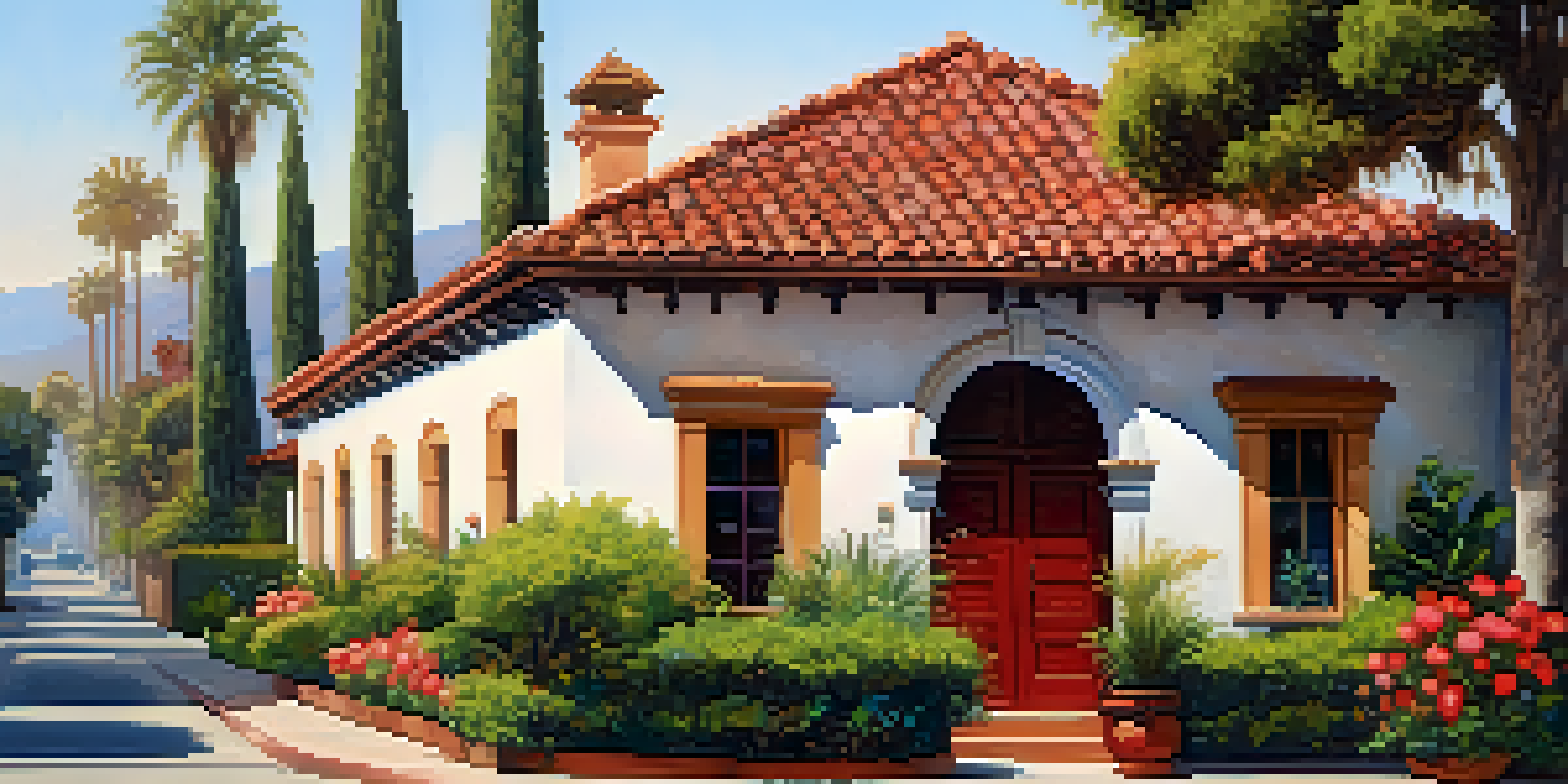Influence of Spanish Colonial Revival on Modern Santa Barbara Design

Understanding Spanish Colonial Revival Architecture
Spanish Colonial Revival architecture emerged in the early 20th century, inspired by the historic buildings of colonial Spanish missions. Characterized by red-tiled roofs, stucco walls, and wrought iron details, this style evokes a warm, inviting atmosphere. It reflects not only aesthetic preferences but also a cultural nostalgia for California’s history. Santa Barbara became a prominent example of this architectural movement, showcasing its unique adaptations and local influences.
Historical Context of Santa Barbara's Design
Santa Barbara's design landscape began to change dramatically in the early 1900s, particularly after a devastating earthquake in 1925. The city's rebuilding efforts focused on creating a cohesive visual identity that honored its Spanish heritage. This led to the widespread adoption of Spanish Colonial Revival styles across public buildings, homes, and even commercial properties. As a result, the community began to embrace this architectural identity, cultivating a sense of place and pride.
Spanish Colonial Revival Overview
Spanish Colonial Revival architecture, inspired by colonial Spanish missions, features elements like red-tiled roofs and stucco walls, creating a warm and inviting atmosphere.
Key Features of Spanish Colonial Revival Style
The Spanish Colonial Revival style is rich in distinctive features that contribute to its charm. Elements such as arched doorways, intricate tile work, and decorative columns create a harmonious blend of beauty and function. Additionally, the use of earthy color palettes and natural materials enhances the connection to the surrounding landscape. These features not only define the aesthetic but also promote a sense of tranquility and warmth, appealing to both residents and visitors alike.
The Role of Landscape in Santa Barbara Design
In Santa Barbara, the interplay between architecture and landscape is particularly noteworthy. The design of buildings often takes into account the stunning coastal views and mountainous backdrop, creating a seamless integration with nature. Courtyards and gardens are common, inviting outdoor living and fostering a community spirit. This connection to the landscape enhances the Spanish Colonial Revival style, making it feel like an extension of the environment rather than an imposition.
Cultural Impact on Santa Barbara
The architectural style reflects Santa Barbara's rich history and fosters community identity, enhancing social interactions and pride among residents.
Modern Interpretations of Spanish Colonial Revival
Today, architects in Santa Barbara continue to draw inspiration from the Spanish Colonial Revival style, adapting it to suit contemporary needs. Modern interpretations often incorporate sustainable materials and innovative designs while retaining traditional aesthetics. This fusion of old and new not only honors historical roots but also embraces modern lifestyles. As a result, the architecture remains relevant and functional, appealing to a diverse population.
Cultural Significance of Spanish Colonial Revival
The cultural importance of the Spanish Colonial Revival style extends beyond its visual appeal. It serves as a reminder of Santa Barbara's rich history and the diverse influences that have shaped the region. This architectural style embodies a sense of identity and community, reflecting the values and traditions of its inhabitants. Celebrating this heritage through design fosters a deeper connection among residents and visitors alike.
Modern Adaptations of Tradition
Contemporary architects in Santa Barbara are blending sustainable practices with traditional Spanish Colonial Revival aesthetics, ensuring the style remains relevant.
Community Impact of Spanish Colonial Aesthetics
The influence of Spanish Colonial Revival aesthetics is evident in community spaces throughout Santa Barbara. Parks, plazas, and public buildings often feature design elements that celebrate this architectural heritage. These spaces not only enhance the city’s beauty but also encourage social interaction and community engagement. By prioritizing Spanish Colonial Revival in public design, Santa Barbara cultivates an inviting atmosphere that resonates with both locals and tourists.
Preserving the Legacy of Spanish Colonial Revival
As Santa Barbara continues to evolve, the preservation of Spanish Colonial Revival architecture remains a priority. Local organizations and residents advocate for the protection of these historical structures, ensuring their stories are not forgotten. Restoration efforts often involve meticulous attention to detail, maintaining the integrity of original designs. By valuing this architectural legacy, Santa Barbara not only honors its past but also enriches its future.